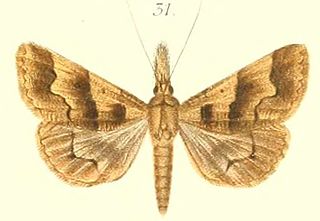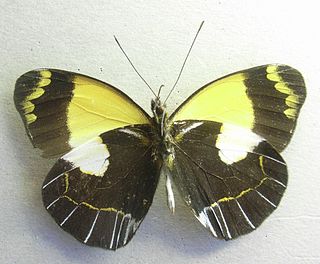Albert Stewart Meek was an English bird collector and naturalist.
Deer Lake First Nation is an Oji-Cree First Nations band government in Northern Ontario, located north of Red Lake, Ontario Canada. It is one of the few First Nations in Ontario to have signed Treaty 5. It is part of the Keewaytinook Okimakanak Council and the Nishnawbe Aski Nation. As of December, 2007, the First Nation had 1,072 registered members, of which their on-reserve population was 868.

Seth Eugene Meek was an American ichthyologist at the Field Museum of Natural History in Chicago. He was the first compiler of a book on Mexican freshwater fishes. Together with his assistant, Samuel F. Hildebrand, he produced the first book on the freshwater fishes of Panama.
The Bougainville crow is a species of bird in the crow family, Corvidae.
The Tagula white-eye or white-throated white-eye is a species of bird in the family Zosteropidae. It is endemic to Papua New Guinea.

The Meek's graphium is a species of butterfly in the family Papilionidae. It is found in Papua New Guinea and the Solomon Islands.

Ophyx is a genus of moths of the family Erebidae.

Priacanthus meeki is a species of marine ray finned fish, a bigeye in the family Priacanthidae. It is a red fish found in the Hawaiian and Midway Islands. It grows to a size of 33 cm in length. Common names are Hawaiian bigeye in English and ula lau au in the Hawaiian language. It, and other species of its family, may also be called āweoweo in Hawaii.

Delias meeki is a butterfly from the family Pieridae. It occurs in seven subspecies in West Papua and Papua. The specific name commemorates English naturalist Albert Stewart Meek who collected the type series in May 1903 at Owgarra north of head of the Aroa River in Papua New Guinea. It forms a species group with the sympatric species Delias niepelti
Chrysasura meeki is a moth of the family Erebidae first described by Walter Rothschild in 1916. It is found in New Guinea.

Ophyx crinipes is a moth of the family Erebidae. It is found in Indonesia and Papua New Guinea.
Ophyx ochroptera is a moth of the family Erebidae first described by Achille Guenée in 1852. It is found in Australia, where it has been recorded from Queensland and New South Wales. The habitat consists of rainforests.

The Cocytiini are a tribe of moths in the family Erebidae. Adults of some members of the subfamily, especially in the genus Serrodes, have a proboscis capable of piercing fruit skins, allowing the moth to drink the fruit juice.
Ophyx pseudoptera is a moth of the family Erebidae first described by Oswald Bertram Lower in 1903. It is found in Papua, Papua New Guinea and Australia, where it has been recorded from Queensland. The habitat consists of lowland areas.
Ophyx owgarra is a moth of the family Erebidae first described by George Thomas Bethune-Baker in 1906. It is found in Papua and Papua New Guinea. The habitat consists of mountainous areas.
Ophyx eurrhoa is a moth of the family Erebidae. It is found in Australia, where it has been recorded from Queensland.
Ophyx bilinea is a moth of the family Erebidae. It is found in New Ireland.
Ophyx chionopasta is a moth in the family Erebidae. Endemic to Papua, Indonesia, it was first described by George Hampson in 1926.
Ophyx striata is a moth of the family Erebidae first described by George Hampson in 1926. It is found in Papua, Indonesia, where it has only been recorded from Fakfak, the type locality.
Ophyx talesea is a moth of the family Erebidae. It is found in New Britain.





